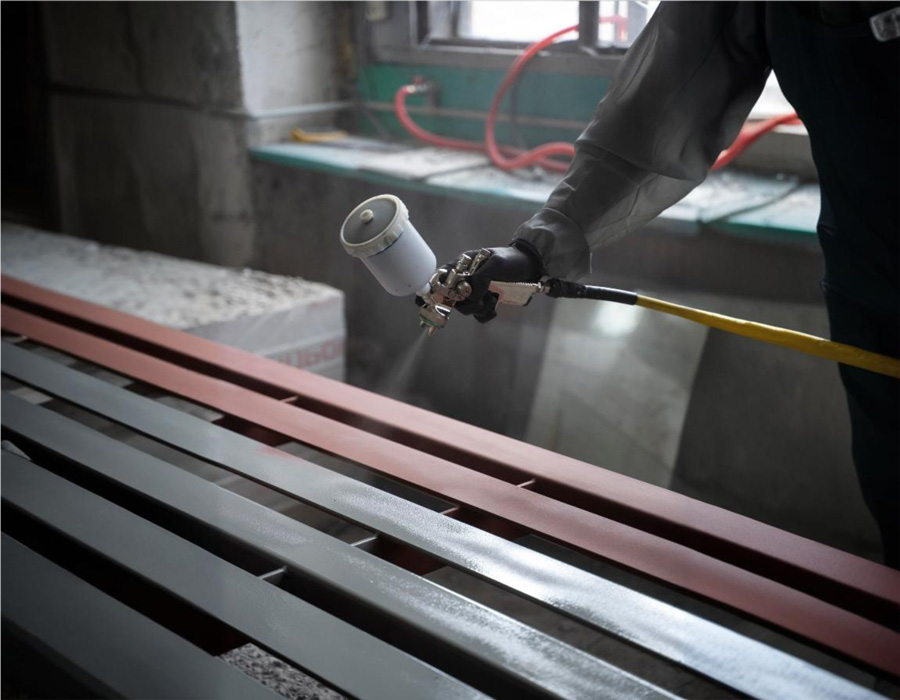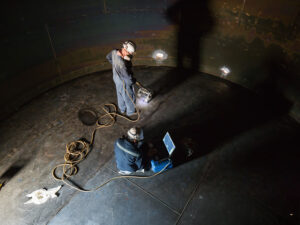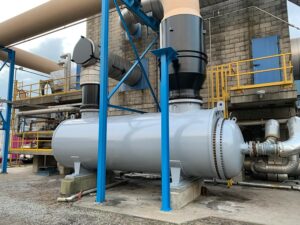Changing the look of aluminum surfaces can make a big difference in homes and businesses. Whether it’s for your house’s siding or your business’s exterior, learning to spray paint aluminum sheets is key. This guide will teach you the pro techniques and tips to get a perfect, lasting finish.
Key Takeaways
- Understand the essential tools and materials required for spray painting aluminum sheets
- Learn proper surface preparation techniques to ensure optimal paint adhesion
- Discover the principles of paint adhesion and how to optimise spray painting conditions
- Master the art of priming for lasting results and a professional-grade finish
- Explore the best practices and common mistakes to avoid during the application process
Essential Tools and Materials for Aluminum Sheet Painting
Painting aluminum sheets needs the right tools and materials for a top-notch finish. Whether it’s for a home project or a professional job, having the right equipment is key. This includes everything from spray guns to safety gear.
Professional-Grade Spray Equipment
A top-notch spray gun is vital for painting aluminum sheets. Look for ones made for painting aluminum siding with spray gun. These guns have adjustable nozzles and special technology for a smooth coat.
Safety Gear and Protection
Painter’s overalls, safety harnesses, and eye protection are a must. They keep you safe from job hazards. Using elevating platforms also makes the job safer and more comfortable.
Required Paint Types and Primers
Special paints and primers for aluminum are a must. They offer great adhesion, durability, and protect against corrosion. Choose the right paint and primer for your project.
“Proper preparation and the right tools are key to achieving a flawless, long-lasting finish when painting aluminum sheets.”
Investing in the right tools and materials is crucial for a successful project. It ensures your aluminum sheets look their best.
Surface Preparation Techniques for Aluminum
Getting the aluminum surface ready is key before painting. It ensures a finish that lasts. There are a few important steps to take when prepping your aluminum for spray painting.
First, pressure washing is great for removing dirt, grease, and other stuff. This makes sure the paint sticks well. If there’s tough grime or rust, sandblasting is needed for a clean base.
- Pressure washing the aluminum to remove dirt and grime
- Using a rust annihilator to address any existing corrosion
- Sanding or sandblasting the surface to create a rougher texture for better paint adhesion
- Thoroughly degreasing the aluminum with a dedicated cleaner
- Wiping down the surface with a tack cloth to remove any remaining dust or particles
“Proper surface preparation is the key to achieving a smooth, long-lasting paint finish on aluminum.”
By properly preparing the aluminum, you’re setting up for success with spray painting. The extra work on surface prep will make a big difference in the final look.
Understanding Spray Painting Aluminum Sheets
Painting aluminum sheets requires knowing how paint sticks to the metal. The success depends on the interaction between the aluminum and the primer or anticorrosion treatment.
Paint Adhesion Principles
Aluminum is smooth and non-porous, making it hard for paint to stick. To fix this, applying a primer or anticorrosion treatment is key. This makes the paint bond well with the metal, creating a lasting finish.
Temperature and Weather Conditions
The right temperature and weather are vital for painting success. You need the temperature to be just right and humidity low. Painting in the sun or strong winds can ruin the finish, causing uneven paint or drying too fast.
Coverage Calculations
- First, figure out how much aluminum you need to paint.
- Then, check the coverage of your primer and paint with the manufacturer.
- Remember to add extra for waste or overspray. This ensures you have enough anticorrosion treatment, primer, and antirust paint.
Knowing about paint adhesion, the right weather, and how much paint you need helps a lot. It sets you up for a successful and lasting aluminum sheet painting job.
Proper Cleaning and Degreasing Methods
To get a lasting, professional look on aluminum siding or sheets, you need to prepare the surface well. Cleaning and degreasing the aluminum is a key step. It helps the paint stick better and avoids issues like peeling or flaking.
Experts in painting say to use aluminum-safe cleaning solutions for degreasing. These cleaners remove dirt, oil, and other stuff without harming the aluminum. Here are the main steps for cleaning and degreasing:
- Begin by wiping the aluminum with a damp microfiber cloth and a mild, pH-neutral detergent. This removes loose dirt or debris.
- Then, use an aluminum-specific degreasing solution on a clean rag. Gently scrub to get rid of grease, oil, and other stuff.
- After that, rinse the area well with clean water. Make sure to get rid of all cleaning solution residue. This is important for paint adhesion.
- Let the surface dry completely before moving on to the next steps in painting.
By doing these cleaning and degreasing steps, aluminum siding painting contractors and industry painting pros can ensure a perfect, lasting paint job on aluminum.
“Investing the time and effort in thorough surface preparation is the key to achieving a beautiful, durable finish when painting aluminum. Skipping this crucial step can lead to all sorts of problems down the line.”
Priming Techniques for Lasting Results
To get a long-lasting paint job on aluminum, you need to focus on priming. Choosing the right primer, how you apply it, and knowing when it dries are key. These steps help create a durable paint finish that lasts.
Primer Selection Guide
Not all primers work the same on aluminum. You should pick one made for metal. Look for primers that stick well, resist corrosion, and work with your paint. Some good choices are etching primers, enamel primers, and galvanized metal primers.
Application Methods
- Use a top-notch spray gun or paint sprayer for the best results. It helps cover the surface evenly.
- Make sure the aluminum is clean and free of grease before priming. This helps the primer stick better.
- Apply the primer in thin, even layers. Let it dry fully between coats. Avoid thick, uneven coats that can cause problems.
Drying Times and Conditions
The drying time for primer on aluminum depends on the product, temperature, and humidity. Most metal primers need at least 30 minutes to an hour to dry before painting. Make sure the primer is dry and cured before moving on for a long-lasting paint job.
“Proper priming is the foundation for a durable paint finish that will withstand the test of time on aluminum surfaces.”
Professional Spray Painting Techniques
To get a perfect spray-painted finish on aluminum siding, you need to learn professional techniques. Whether you’re updating your siding or starting a new project, knowing the right methods is crucial.
Here are some top tips from experts to help you achieve amazing results with your spray painting aluminum siding or aluminum siding update project:
- Proper Gun Handling: Keep the spray gun 6-12 inches away from the surface. Hold it straight up and down. This prevents drips and ensures even paint.
- Overlapping Spray Patterns: Overlap each spray by 50% for full coverage. But don’t overlap too much to avoid a textured finish.
- Controlled Trigger Technique: Press the trigger softly and release slowly. This reduces splatter and gives a smooth finish.
- Smooth, Sweeping Motions: Paint in long, even strokes, moving the gun parallel to the surface. Avoid jerky movements for an even finish.
- Proper Spraying Angle: Adjust the gun’s angle for the surface’s shape. This ensures the paint covers evenly.
By using these professional techniques, you can give your aluminum siding a flawless, lasting finish. This will greatly improve your home’s look.
“The key to a perfect spray-painted aluminum siding is in the application method. Attention to detail and a steady hand can make all the difference.”
Common Mistakes to Avoid During Application
Painting aluminum sheets requires careful attention to detail for top-notch results. Painters need to watch out for common mistakes that can harm the quality and life of the paint job. Knowing and fixing these issues can help ensure a smooth and successful painting process.
Paint Thickness Challenges
Getting the right paint thickness is a big challenge when painting aluminum sheets. Too little paint can cause an uneven finish, while too much can lead to drips and a bad look. It’s key to follow the paint maker’s advice on the right thickness and apply it evenly.
Environmental Factors to Consider
The environment where you paint can greatly affect your project’s success. Things like temperature, humidity, and wind can change how the paint dries, sticks, and looks. Make sure you paint in a place with good air, the right temperature, and humidity for the best painting conditions.
Equipment-Related Issues
The tools and equipment you use can also lead to common mistakes. Make sure your spray gun is set right, clean, and works well. Any problems with your equipment, like clogged nozzles or uneven air pressure, can mess up the paint job.
By being aware of these common mistakes and taking steps to avoid them, painting contractors can get great results with their aluminum sheet projects.
“Attention to detail is key when it comes to painting aluminum sheets. Identifying and avoiding common mistakes can make all the difference in the final outcome.”
Finishing Touches and Post-Paint Care
To keep your aluminum surfaces looking great, focus on the finishing touches and post-paint care. Start by getting a high-quality painting warranty. This covers issues like peeling, fading, or chipping, giving you peace of mind.
Keeping your painted aluminum sheets clean is crucial. Use a mild, non-abrasive cleaner and a soft cloth or sponge. Avoid harsh chemicals or scrubbing to prevent damage. If touch-ups are needed, match the original paint color carefully.
If you need to replace a sheet, choose a reputable supplier. Look for ones with excellent customer service and a strong product guarantee. This ensures your project runs smoothly and efficiently. By following these steps and caring for your painted surfaces, they will stay beautiful for years.
FAQ
What type of spray equipment is recommended for painting aluminum sheets?
For top results, use professional-grade airless or HVLP spray guns. They ensure an even coat on large aluminum surfaces.
What safety precautions should be taken when spray painting aluminum?
Wear a respirator, eye protection, and protective clothing. Also, use elevating platforms and safety harnesses at heights for safety.
What types of paint and primers are suitable for aluminum surfaces?
Choose aluminum-specific paints and primers for the best adhesion. Options like acrylic latex, alkyd-based, or epoxy-based formulas are recommended for their durability and corrosion resistance.
How do I prepare the aluminum surface before painting?
Begin with pressure washing to remove dirt, grease, and old coatings. For corroded areas, sandblasting or using a rust annihilator may be needed. This ensures a clean, dry surface for paint adhesion.
What factors should I consider when applying the paint to aluminum sheets?
Ensure proper paint adhesion by considering surface temperature, humidity, and environmental conditions. Applying a primer before the topcoat is also crucial for lasting results.
How can I achieve a professional-looking, even finish when spray painting aluminum?
Master spray painting techniques like proper gun handling and maintaining distance. Use overlapping passes for a smooth finish. Attention to coverage calculations helps avoid paint sags or uneven application.
How do I maintain the quality of the painted aluminum surface over time?
Regular cleaning and touch-up methods are essential. Avoid abrasive cleaners and consider a clear protective coating for extra durability. If needed, work with a reputable contractor for a seamless paint job on new sheets.





